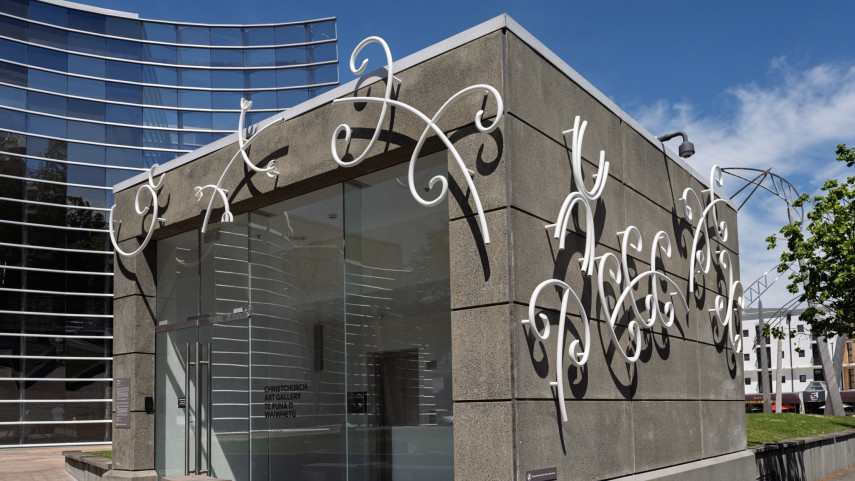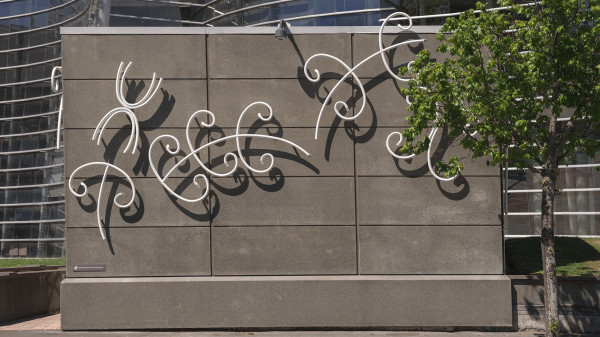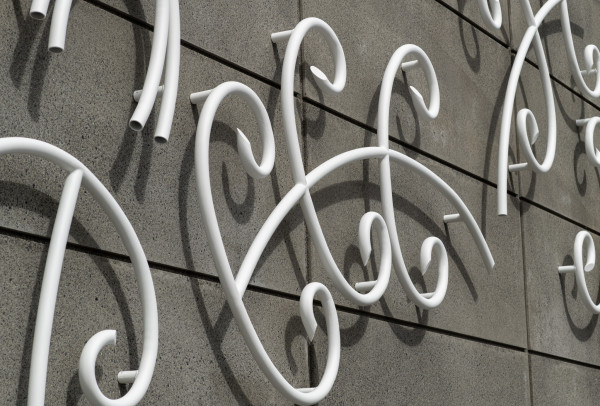
New sculpture for Art Gallery bunker

Share this story
A sculpture project is bringing new life to the Christchurch Art Gallery Te Puna o Waiwhetū forecourt.
The outside of the “bunker” – which houses the lift and stairs to the gallery’s underground carpark – has been adorned with abstracted metal shapes evoking plants, animals and insects.
Acclaimed Kāi Tahu artist Areta Wilkinson is behind the work, titled Te Mauri o te Puna.
Wilkinson says the sculpture connects with the nourishing spring referenced in Te Puna o Waiwhetū – the name of the Gallery building, which can be translated as a ‘spring of star-reflecting waters’.

“In te ao Māori, a puna of water also represents spiritual and physical connections between the atua (ancestors) celebrated in Kāi Tahu creation narratives and life on earth.
“Cultural knowledge grows around a healthy water source. The Gallery is another source, sustaining artistic knowledge and expressing cultural identity and ideas. A thriving puna is a source of sustenance and wellbeing,” says Wilkinson.
The linear form of Wilkinson’s work also pays homage to her own toi Māori history, in relationship to the ancestral rock art of Te Waipounamu South Island.

Wilkinson was commissioned by the Gallery to create the site-specific work, which will be displayed for the next five years.
Lead Curator Felicity Milburn says Wilkinson’s practice shifts fluidly between many forms – including body adornment and large-scale public installations.
“When designing the individual elements for this work, Areta chose a scale that would make it visible to those driving past on Montreal Street and also work for people who encounter the work from the Gallery forecourt.
“A flowing arrangement of tubular steel shapes encircles all four sides of the bunker, and as you walk around it you experience the work from different perspectives. It’s a dynamic piece, evoking the mauri, or unique vital essence, of a healthy spring, and also capturing the energy of all the flora and fauna that might surround it.
“We hold several significant works by Wilkinson in the Gallery’s collection, so we’re thrilled that this new project is visible from outside the building – whether people are passing by on foot, driving through the city, or enjoying lunch in the sun. It offers a wonderful opportunity for people to engage with her work, and will tempt them inside to see more,” says Milburn.
